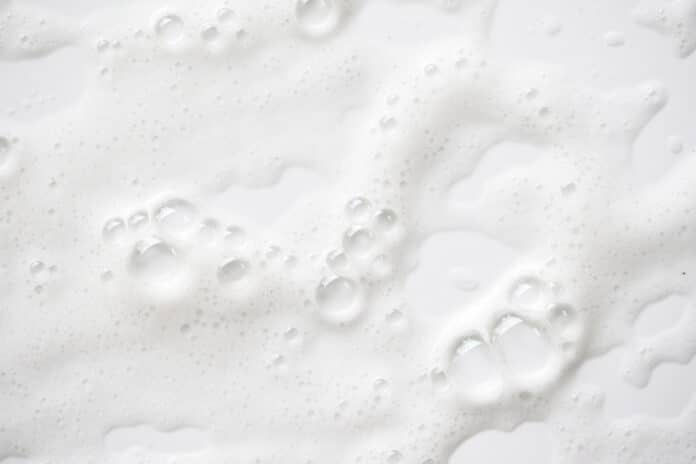Foam is not only an industrially important form of matter but also one of the soft-jammed systems such as colloidal suspensions and emulsion suspensions. Since gas bubbles and liquid combine to form foams, which differ from simple liquids in their rheology, this coupling is believed to have a significant impact.
Yet surprisingly, little is known about the spreading behavior of foams, particularly when it comes to how a flat blade or plate can scrape it across the surface into a layer.
Researchers from Tokyo Metropolitan University have uncovered the physics behind how foams are spread on surfaces.
Foam balls on a flat surface were scraped with a plate to see the results. They discovered various patterns that are substantially influenced by scraping speed and are controlled by conflicting physical phenomena. Their findings hold true for soft substances, such as mayonnaise on bread or insulation on walls, that must be applied equally to surfaces.
The researchers created small domes of detergent foam on a flat surface and scraped them with an acrylic plate, carefully maintaining a set distance between the plate and the surface. A video camera was used to capture detailed footage of the entire operation. They found that changing the plate’s speed completely alters how the foam spreads and how much affinity the foam’s liquid has for the surface or whether it is hydrophilic or hydrophobic (attracts or repels water).
At slow scraping rates, the foam equally disperses across a hydrophobic surface, forming a lengthy portion the same width as the original dome. The plate glides along with very little foam in its trail as the velocity is increased, the foam no longer expands but instead coasts along the surface on a thin layer of fluid. The spreading regime eventually returns at the fastest speeds they can achieve, but this time the width of the foam tail is smaller than the original dome. On a hydrophilic surface, however, the first regime was completely absent.
The team decided to focus on the “wetting” effect, or whether the liquid in the foam wants to cover the surface, as a result of the differences between the two surfaces. Focusing on the low-speed regime, they discovered that films of detergent that make up the foam tend to cling to hydrophobic surfaces because the liquid tends to “dewet” the surface. The picture appears in which the plate merely spreads the foam from the dome over time.
A lubricating layer forms at the foam’s base if pushed across the surface quickly enough to moisten it. Foam walls, often referred to as Plateau borders, are no longer able to grasp the substrate and lock into place. This is why a speedier plate will drive the rest across on a thin layer of liquid, leaving nothing behind except a liquid trail while leaving a thin area of foam where the initial dome was. The investigation looked into the impact of the plate thickness and gap width in addition to the plate speed.
The study highlights the lesser-known parts of an everyday phenomenon, with significant potential impact on not only foams but a wider range of soft materials, whether paint, protective coatings, or mayonnaise.
Journal Reference:
- Masaya Endo, Marie Tani, Rei Kurita. Scraping of foam on a substrate. Journal of Colloid and Interface Science. DOI: 10.1016/j.jcis.2023.07.023
